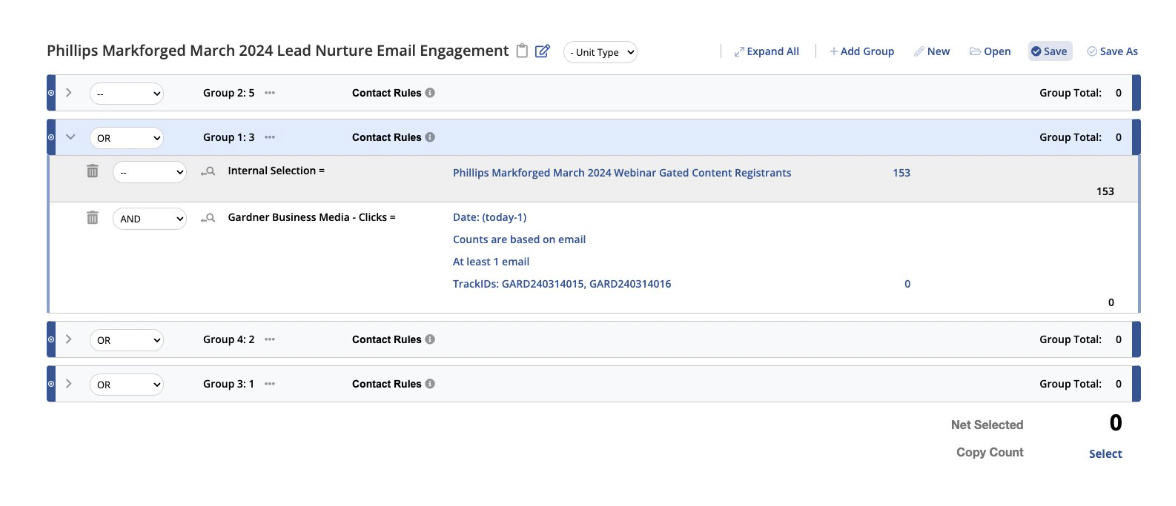How Gardner Business Media scores and activates leads with Omeda + Zapier
You can create the best content and provide the best leads. But if your customers can’t turn those leads into business? You’re still missing opportunities to drive ROI, provide value and earn revenue.
Alex Lytle, Director of Digital Engagement of Gardner Business Media, found himself in this position this year. His team uses webinars, gated content, and custom programs to drive leads. But Lytle soon realized many of their customers didn’t have the team or tools necessary to follow up with those leads.
“We talked to them and said, ‘Hey, what are you finding in these leads? Are they converting? What kind of success are you seeing?’” Lytle says. “A lot of them came back and they said, ‘Well, not necessarily, we haven’t reached out to them yet,’ or ‘We’re not sure yet.’”
Some might’ve seen an obstacle, but Lytle saw opportunity. He realized his team could help their customers nurture and activate the leads they acquired.
“What if there was a way for us to help those customers and say, ‘Hey, we’ll take those leads for you, we’ll nurture them, we’ll put them through that funnel for you, and then we’ll score them and communicate that back with you?’” he says.
But Lytle couldn’t ask his team to collect and score leads, manage and clean the audience data, then create brand new nurture campaigns from scratch manually. So they needed to automate as much of this process as possible.
The solution: They used Omeda and Zapier to help their customers score, nurture and activate their leads. Best of all, it’s almost entirely automated. Here’s how they’re doing it:
How Gardner scores, nurtures and activates leads with Omeda and Zapier
1. The Gardner team generates leads using Omeda forms, then they use webhooks to push those leads to Excel.
First, the Gardner team collects and qualifies leads through content. Since they use Omeda’s CDP, form submissions immediately flow to their system of record, no matter where they come from.
Responses automatically flow to each person’s pre-existing audience profile, giving the Gardner team the most current, complete view of each lead.
Leads are also added to relevant audience segments in real time as they meet the underlying criteria, so the Gardner team doesn’t need to manually pull lists, clean data, or manipulate audience segments before activating it on behalf of their customers.
Then they use webhooks to push those leads to an Excel spreadsheet that the customer can access. This way, customers can see and learn more about their new leads in real time.
2. The Gardner team nurtures and scores leads through email, personalizations and retargeted ads. Then, the Gardner team uses Omeda’s marketing automation solution to engage those leads through email, on-site personalizations and retargeting (via Omeda’s AdRoll integration).
Since Omeda’s email tool connects to their CDP, the Gardner team can target custom audiences built in their CDP, design emails, schedule and adjust sends — all in one place.
By setting fatigue and goal filters on Omeda, the Gardner team can also filter out recipients that had already re-engaged, and temporarily pause sending to recipients displaying email fatigue.
So even though their campaign runs mostly on autopilot, they could scale up or down based on each individual audience member’s response to previous messaging (and they could message millions of audience members without hurting their deliverability).
They can also review opens, clicks and link performance for each element throughout the campaign. This way, the team can monitor their campaign, adjust messaging or content, change their targeting in real time.
3. As the nurture campaign is running, the Gardner team uses Zapier to collect audience members who opened and clicked their nurture emails, or saw or clicked on the personalizations, and they give each of those behaviors a different score.
“Somebody who clicks on an email and opens it or clicks it twice, it might be worth five points. Somebody who opened that email might be three points,” Lytle says.

4. Once that’s complete, the Gardner team can use Omeda’s Audience Builder database to query audience members by their lead score. This way, they can tailor their nurture strategy to each lead’s interest level.
5. The Gardner team updates the spreadsheet with new scores for their customer to access. “The customer can come on every morning and see, ‘Oh, wait a minute, that person at Advanced 3D Print has a score of 16,’” Lytle says. “‘Maybe I should reach out to that person or have a salesperson contact them.’”
6. The Gardner team runs a softer-touch nurture sequence for other audience members. But what about the people that see a white paper and say, “Looks cool, but I don’t want to give them my information?” Gardner runs a similar, but less aggressive, nurture program to keep those readers in play.
If the Gardner team can identify the person’s email address using their known Omeda data, they retarget this person via AdRoll or pop-ups.
Gardner doesn’t score those leads or share them with their customers, but retargeting helps their customers drive traffic and gives them another chance to convert those visitors.